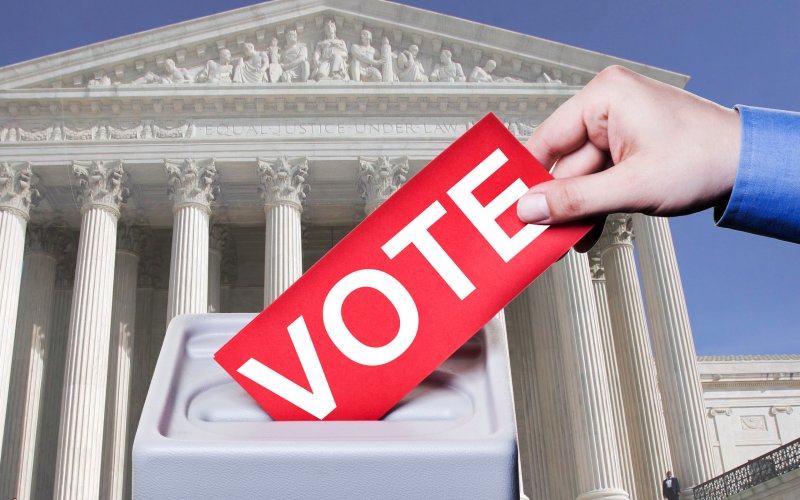By NALEO Educational Fund
LatinaLista
|
Changes to how nation draws state legislative districts could result in approximately 55 percent of the Latino population being excluded if only eligible voters were counted.
Less than one year away from Election 2016, oral arguments in the Evenwel v. Abbott (commonly referred to as “one person, one vote”) case began in the U.S. Supreme Court today. Settled for more than half a century by the 1964 Supreme Court’s ruling in Reynolds v. Simms, the method used to divide state legislative districts in a manner that would result in fair representation is now up for debate. That decision, which directed states for the last 51 years to uphold “one person, one vote” by drawing state legislative districts in a way that divided total population up equally, is being revisited. Coming into question is whether states should count only voters or eligible voters in determining the size of state legislative districts. Changes in how our nation defines this principle could have a damaging impact in our democracy’s responsiveness to the more than 55 million Latinos living in the United States today. Counting only eligible voters and excluding youth and non-citizens (including those here legally) would ultimately grant greater political power to population groups that are older, wealthier and more suburban. “The U.S. Supreme Court should not use this case as an opportunity to move our country backwards 51 years,” said Arturo Vargas, NALEO Educational Fund executive director. “Instead, the Court should use this as an opportunity to cement the current approach used to uphold the tenet of “one person, one vote” into law to ensure we have a democracy for all, not a democracy for the privileged few.” This case is fundamental for the nation’s second largest population group, and not just because of the immigrant community. With a higher likelihood to live in urban areas, a younger median age (28 for Latinos v. 38 for all Americans), and a population that accounts for one of every four school-age youth, Latino access to fair representation would be in significant danger if the court redefined “one person, one vote”. Analysis in an amicus brief with NALEO Educational Fund and other coalition groups found that approximately 55 percent of the Latino population would be excluded if only eligible voters were counted in districts, compared to only 21 percent of non-Hispanic whites. In cities like Los Angeles, where only 690,000 or 32 percent of the population are of citizen voting age, this could result in significant consequences for elected officials and their constituents. Implementation of a redistricting method that is based solely on the number of eligible voters would also be problematic from a data perspective. Currently, the data needed to count only eligible voters in districts do not exist at this point in time. The closest thing we have is the information gathered by the U.S. Census Bureau through the decennial count of the nation and the American Community Survey (ACS), which uses responses from only 3.5 million households each year to compile a representative sample of the nation, a sample which may not provide full data for the detailed analysis redistricting demands. Vargas went on to say, “By making our political system reliant on incomplete data and responsive to less Americans, not more, the only thing accomplished by changing our nation’s definition of “one person, one vote” would be one big mess. "We call on the nation’s highest court to uphold the current method used to draw state legislative districts to ensure our democracy remains responsive to Latinos and all Americans.” (Editor's Note: The above commentary was released as a news release by NALEO Educational Fund.) NALEO Educational Fund facilitates the full participation of Latinos in the American political process, from citizenship to public service. |



